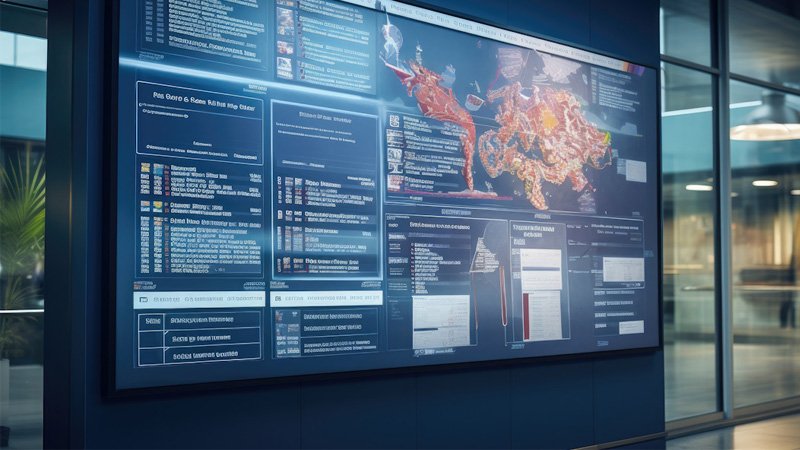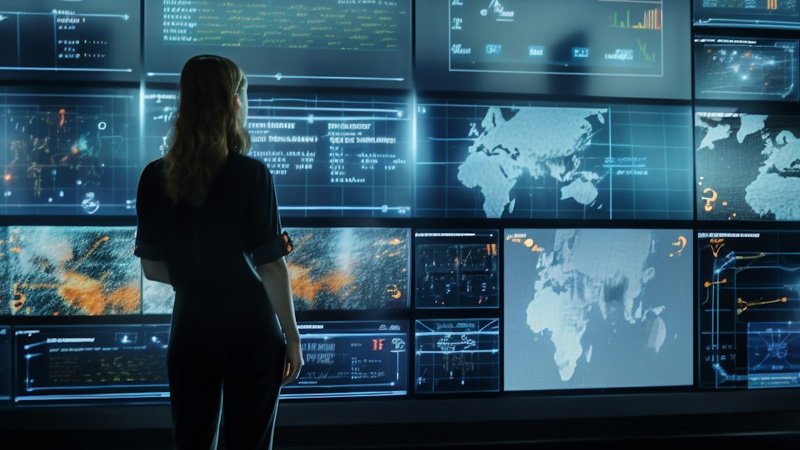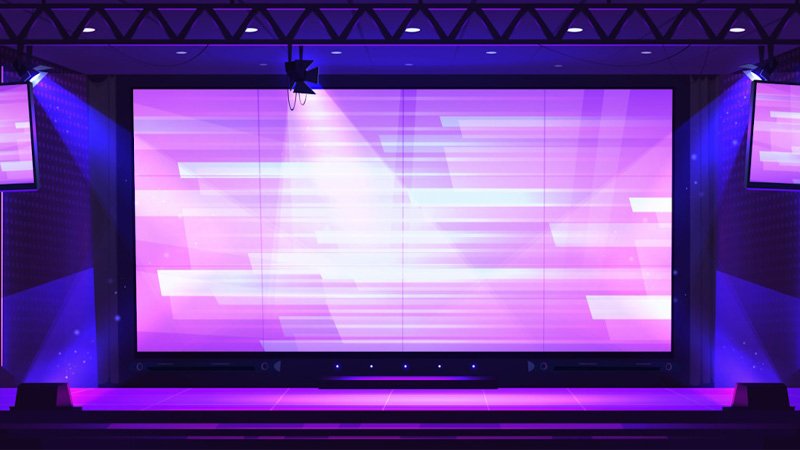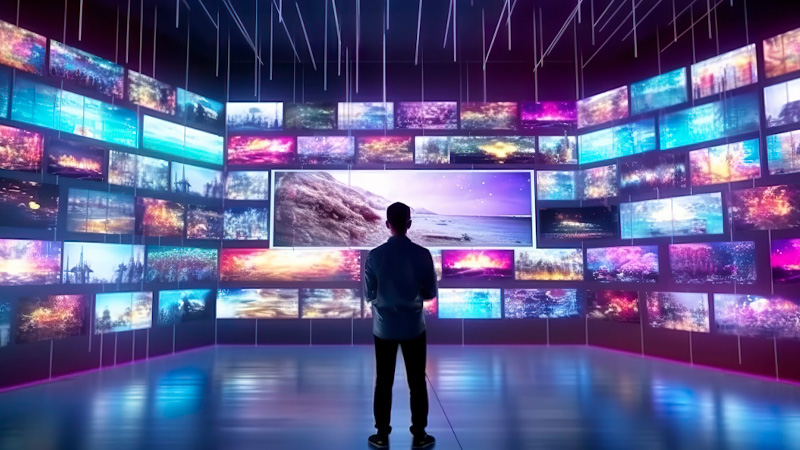To ensure your LED screen delivers the crispest, clearest images, you need to use an LED Video Wall Processor that can meet your demands. These devices convert image data sent from the transmitter card into a signal the LED Screen can process.
Two major competitors in the world of LED screen receiver cards are Novastar and Colorlight. Both produce effective hardware that can meet the needs of many clients, but there are points to consider.
1. What Are Video Wall Controllers, and Why Do I Need One?
2. Who Wins in The World of LED Video Wall Processors?
3. It Doesn’t End with The HD Video Processor Hardware
4. What Features Are Expected in Top LED Video Wall Processors
5. The Competitive World of LED Video Wall Processors
6. Battle Of the Bottom Line: Video Wall Processor Price Ranges
7. Contact LEDSino For Help Choosing Your LED Video Wall Processor
1. What Are Video Wall Controllers, and Why Do I Need One?
LED video wall processors, also known as Video Wall Processors, are the most effective way of controlling a multi-screen display. They allow you to control how your content is displayed across your screens finely. High-quality controllers even make it possible to separate your multi-screen display into multiple sections on the fly. A handful of screens can be used to show input from one source while the rest of the screen keeps focusing on your main event.
Video wall controllers can also enhance the video, bringing sharper images and brighter colors to the display. They let your display smoothly transition from scene to scene and even handle higher framerates ensuring a smooth display. If you’re serious about getting the most out of your video wall, it’s time to invest in a video wall controller.

2. Who Wins in The World of LED Video Wall Processors?
ColorLight and Novastar are well-known within the industry and are trusted providers of these important processors. As with any two similar devices produced by competitors, each of them brings its pros and cons to the table.
Novastar Hardware:
● Stability and Reliability – Consumers trust Novastars devices due to their reputation for being LED video wall processors that won’t let you down.
● Advanced Image Processing – The color and image quality of Novastar receiver cards are unparalleled by the competition.
● Versatility – Novastar is known for being compatible with numerous input options, including VGA, DVI, and HDMI. This makes them a great choice for those needing a device that can serve several applications.
● Powerful Utility – These devices come with built-in calibration functions that allow users to precisely adjust their LED Screens’ grayscale, color, and brightness.
● Fresh Technology – Dynamic Engine technology provides stunning and vivid imagery using dynamic contrast enhancements driven by Picture Engine 2.0.
ColorLight Hardware:
● Stunning Imagery – Color adjustment and processing run key to the ColorLight platform.
● High Frame Rate, Ultra-Low Latency – ColorLight can deliver lightning-fast framerates using its built-in frame rate multiplier. You’ll enjoy 120Hz, 144Hz, or 240Hz framerates without shadow dragging or latency to spoil the experience.
● Color Correction Features—These LED video wall processors ensure stunning video quality for your audience. This is achieved through powerful color correction features that precisely control the accuracy and consistency of color.
Both manufacturers deliver powerful performance and stunning visuals to your audience. But when you need high frame rates and unparalleled beauty, ColorLight may be your choice. NovaStar delivers versatility, utility, and the latest video enhancement technologies for an unforgettable experience.

3. It Doesn’t End with The HD Video Processor Hardware
While robust and cutting-edge, the hardware can’t do the work on its own. Incredible state-of-the-art software drives it, helping bring these devices’ capabilities to life. Novastudio comes with powerful, professional display control software that helps its HD video processor deliver up to its capabilities.
NovaStar Software Delivers:
● Comfortable Use Interface – NovaStar focuses on ease of use when designing its user interface. The interface is intuitive and easy to use without sacrificing any of the device’s power or capabilities.
● Editing Suite Built-In – Tools for managing your videos and images, adjusting, and editing are available. This is no slapped-on implementation but a full editing suite suitable for any professional environment.
● Remote Access – These devices allow remote display monitoring and real-time control, giving users an unparalleled ability to deliver the desired experience.
ColorLight delivers its powerful suite of software to drive its LED Video Wall Processors, focusing on a dynamic, professional user experience.
ColorLight Software Delivers:
● Professional Control Software – Colorlight X4, ColorLight SmartLCT, and various other options are available with their receiver.
● Multiple Input Management – This easy-to-use software makes managing multiple signal formats and input sources a breeze.
● Dynamic Display Configurations – ColorLight delivers products that support heterogeneous displays. These displays can manage different resolutions to deliver dynamic display configurations to meet your needs.

4. What Features Are Expected in Top LED Video Wall Processors
Given the many considerations for creating the perfect viewing experience, choosing the right LED Video Wall processor can be challenging. Both ColorLight and NovaStar have features that can make the right choice. When it comes down to brass tacks, however, what should you be looking for in your processor?
● Dependability – No matter what results your video processor promises, none will matter if you can’t depend on it. The best devices will stand the test of time and won’t suddenly shut down on you during a presentation. NovaStar is well known for its dependability and stability, but ColorLight is also trusted by consumers. Both provide technical support options, but NovaStar has many more service locations worldwide.
● Ease of Use – Even the most effective tool is useless if you can’t figure out how to use it. ColorStar is known for its intuitive design, streamlining the process of switching between displays and input sources. It eliminates command-line interfaces and ensures their menus are easy to use. NovaStar can claim many of the same features, but ColorLight is renowned for its ease of use.
● Preset Content Mapping – This feature is desirable when using an LED controller or wall processor. ColorStar is known for making the storage and recovery of custom layouts and templates straightforward and easy to load. NovaStar also offers this feature, and it’s a matter of preference which one suits you. However, when it comes to color control, ColorLight takes the lead.
● Collaboration – Collaboration functionality is key if a team works together to create and manage your presentation. To this end, you want to ensure multiple users can access the system simultaneously. Remote control options are also vital to ensure you’re in control of the experience no matter where you are. NovaStar and ColorLight provide this functionality, but ColorStar is known for multiple channel and input support.
● Security – Access control is paramount whether you’re entertaining or giving an important presentation. You want to ensure that your event isn’t ruined by unauthorized access to the system, especially if it’s taking place in a public venue. NovaStar and ColorLight both deliver on security.
The importance of these features will depend heavily on your specific applications. When selecting a unit, it’s often best to involve an expert on video wall displays.

5. The Competitive World of LED Video Wall Processors
Every day, we see more and more video walls being implemented for various uses. From marketing on a downtown skyscraper to reaching the entire congregation during worship, LED Video Wall Processors drive the show. Their ability to utterly transform your audience’s experience makes them the comprehensive solution for delivering media.
The industry’s competitive nature has led to incredible innovation. Modern LED Video Screens are more energy-efficient, slimmer, and more reliable. Combine these changes with ongoing improvements to LED video wall controllers, and the options available can’t be beaten. However, this means having an expert guide your selection is best.
6. Battle Of the Bottom Line: Video Wall Processor Price Ranges
As with any technology, the major consideration that it all comes down to is the bottom line. How much does the technology you want cost, and is it within your budget to get it? The processors used for getting the most out of your video wall technology can cost anywhere from $15k-$80k. While smaller wall units can get by with smaller units, these will still run you $5-$6,500. Ultimately, the decision on price-point will depend on your needs, and the unit’s capabilities.
In addition to the pricing of the video wall processor, other important factors must be considered when selecting your unit. These include the desired design, the specifications of your video unit, and features that all contribute to the final cost.

7. Contact LEDSino For Help Choosing Your LED Video Wall Processor
When you’re ready to get the most out of your video wall, it’s time to call the experts at LEDSino. Our team will review the details of your needs, including the size of your unit and its intended application. We’ll evaluate what best suits your needs regarding resolution, color control, video enhancement, refresh rates, and other considerations.
During this conversation, we’ll continue working until you find the right video wall processor at the right price. Once we’ve found it, you can have us ship it to you directly or arrange an installation date. Either way, you’ll benefit from a robust warranty and a support team that’s always just a phone call away. With a new video wall controller from LEDSino, you’ll enjoy new high-performance imagery and peace of mind with a company always working for you.



